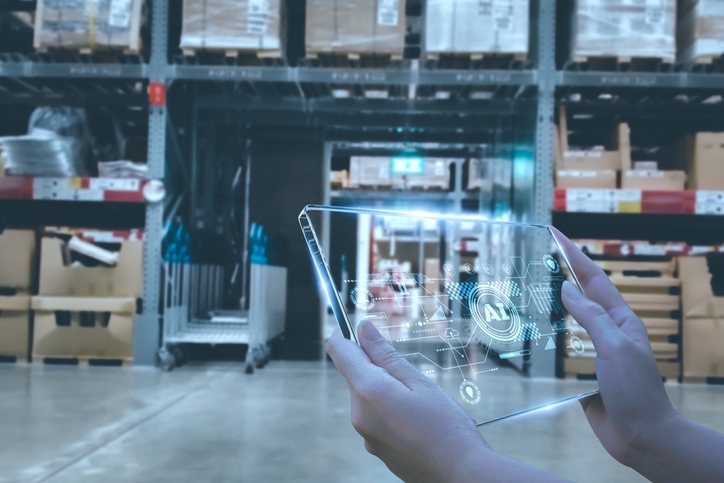Top Tech Tools for Trade Show Event Planning in 2025
Discover how to enhance your trade show planning with technology to drive success and streamline processes. Read the article for practical strategies.

In a dynamic world where digital tools continue to shape every aspect of human interaction, trade show planning has transformed dramatically. Today, planning a trade show isn't just about choosing a venue and setting up tables—it's about crafting an immersive, data-driven, tech-enabled experience that engages trade show attendees, boosts lead generation, and drives real business results.
If you're an event organizer or part of an event planning trade shows team in 2025 or beyond, leveraging technology in trade show planning is not just a recommendation—it's a requirement for success.
Why Technology Is a Game Changer in Trade Show Planning
Trade shows have evolved from being static networking events to becoming fully interactive, strategically planned experiences. With the right event technology and digital tools, event planners can:
- Design more engaging and memorable trade show booths
- Collect real-time attendee data and preferences
- Enable seamless event management and logistics
- Increase attendee engagement through interactive experiences
- Deliver a personalized experience for every guest
- Measure trade show participation, engagement, and ROI with precision
Essential Trade Show Planning Tech Tools (and How to Use Them)
1. Trade Show Planning Software
Tools like Azavista, is a event management software built to handle complexities of trade show planning.
Use cases:
- Centralized dashboards for project management
- Trade show planning checklist and collaboration tools
- CRM integration to manage leads and contact details
- Budget and vendor management
- Real-time task tracking
Pro tip: Choose platforms that offer end to end trade show planning to streamline your workflow.

2. Digital Trade Show Floor Plan Tools
Forget static layouts. With software like ExpoFP, Map Your Show, you can create dynamic, interactive trade show floor plans.
Why it matters:
- Optimize booth placement based on attendee behavior
- Help visitors easily navigate using mobile devices
- Simulate scenarios for emergency exits and traffic flows
Creating a layout and a clear trade show planning checklist that aligns with your event goals marks a solid foundation for your event.
3. RFID Technology and Smart Badges
RFID tags embedded in badges provide real-time tracking of attendees. These tech tools allow organizers to:
- Understand traffic flow and popular zones
- Identify booth visits and dwell time
- Trigger interactive displays when an attendee arrives
Security note: Protect attendee data with regular security audits and secure cloud storage.
4. Mobile Event Apps for Attendee Engagement
Mobile apps like Azavista let organizers connect directly with attendees.
Key features:
- Personalized schedules
- Push notifications
- Gamification elements (scavenger hunts, quizzes)
- Contact detail sharing for lead generation
Enhancing attendee engagement via mobile apps also enables you to collect valuable data for future events.
5. Virtual Event Platforms and Hybrid Integrations
Virtual event platforms like Hopin offer flexibility for remote participants and backup for unexpected circumstances.
Benefits:
- Broader reach beyond physical attendance
- Seamless integration with physical experiences
- Virtual booths and digital product demonstrations
These platforms open up attendee engagement opportunities that extend far beyond just booths.
6. AR & VR: Immersive, Interactive Experiences
Create immersive experiences using augmented reality and virtual reality at your trade show booth. Companies like JigSpace and Zappar enable:
- Virtual product demos
- Augmented booth interactions
- Gamified brand storytelling
These technologies boost trade show presence and elevate your event experience from passive viewing to hands-on interaction. Apart from this, it helps in reducing your carbon footprint because of being sustainability friendly.
7. Digital Signage and Interactive Kiosks
Use digital signage to communicate schedules, speaker updates, or sponsor highlights. Interactive kiosks can serve multiple purposes:
- Attendee check-in
- Wayfinding maps
- Lead collection and feedback
These tools reduce human error and improve attendee satisfaction while giving sponsors valuable exposure. For an even more streamlined experience, explore how badge printing can power a seamless and secure check-in process.

8. Artificial Intelligence and Data Analytics
AI tools help personalize content, recommend sessions, and match attendees with exhibitors based on interests.
Data analytics dashboards allow you to:
- Analyze attendee behavior
- Measure trade show success
- Inform strategic planning for your next event
9. Post-Event Surveys and Insights
Don’t end your engagement when the show ends. Use platforms like SurveyMonkey or Typeform to conduct post event surveys.
What you gain:
- Attendee satisfaction ratings
- Suggestions for improvement
- Data to optimize future planning for trade shows
This feedback loop is essential for continuous improvement and trade show success.
Tips for Successful Tech Integration in Trade Shows
- Start with a strategic plan: Use a trade show planning guide or checklist to outline where tech tools will add value.
- Choose scalable digital platforms: Look for seamless integration with your existing CRM and marketing systems.
- Test all tools before the event: From digital signage to RFID scanners, ensure every component works in advance.
- Train your staff: A powerful tool is useless if your team doesn’t know how to use it.
- Measure everything: Use KPIs to measure trade engagement, lead quality, booth traffic, and social media impact.

Conclusion: Elevate Your Trade Show Strategy with Technology
Trade shows are no longer about tables and banners. They’re about experiences, engagement, and measurable outcomes. By leveraging technology in trade show planning, event organizers can elevate trade outcomes, streamline logistics, understand attendee preferences better and leave a lasting impact.
Whether you're planning your first event or refining your trade show planning template, incorporating the right tech tools is key to a successful trade show.
Need an all-in-one solution? Explore how Azavista can help with every stage of your trade show planning—from booth design to post-event analytics.
More Event Management












